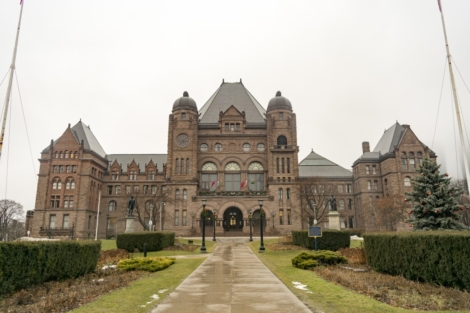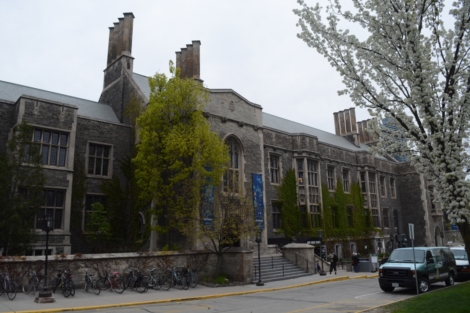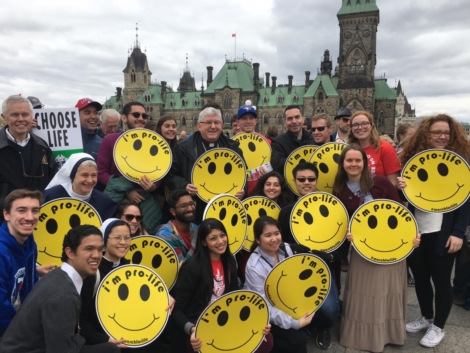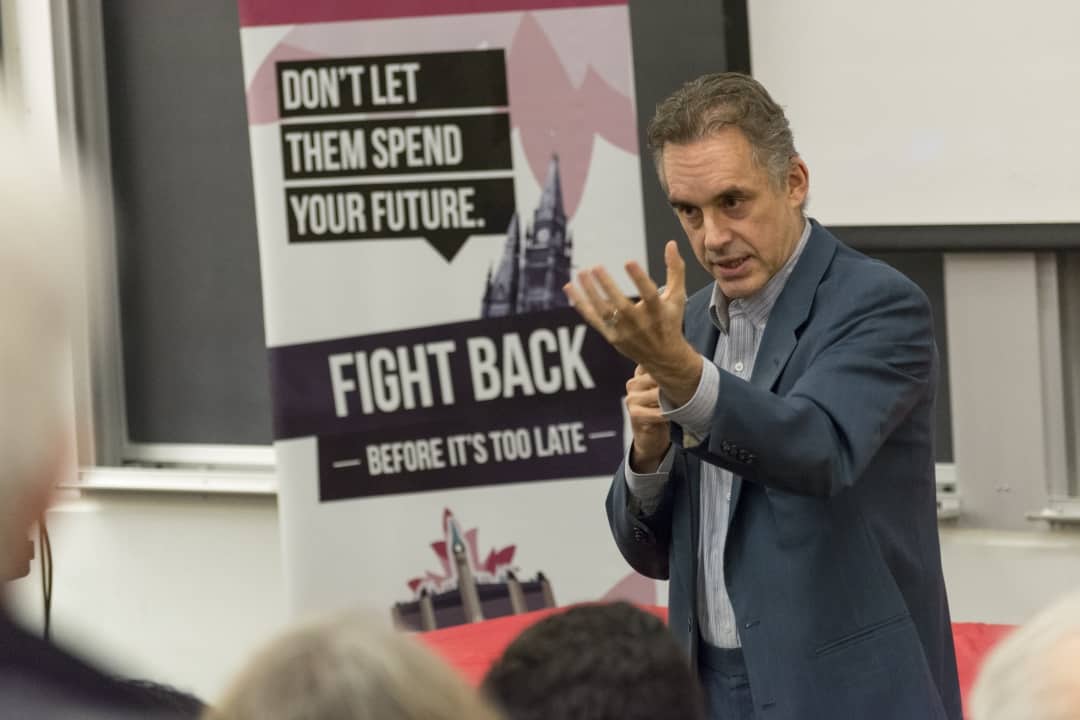Welcome to the first edition of Comment in Brief, a reactive, online-focused subsection featuring short-form responses to The Varsity’s news stories. Briefs will be posted on our website shortly after news stories are published online and later compiled in print.
A series of briefs on news from over the summer is provided below.

STEVEN LEE/THE VARSITY
May 1, “Inside the 2017 Ontario budget”
The 2017 Ontario Budget, released earlier this year, could significantly impact the lives of those who live in the province. Under Premier Kathleen Wynne, the Liberals have allotted budgetary spending for housing reform and have proposed measures to address rising electricity prices. They have also implemented changes intended to boost employment and increase access to prescription drugs for youth. None of these items on the budget, however, are as notable as the Liberals’ new healthcare policy, in line with years of well-developed Canadian policy.
In the US, a war is being waged over Americans’ access to basic health coverage. The Republican US Senate is set on repealing the Affordable Care Act and possibly instituting a replacement, the details of which are largely unknown. For years, Senate members have been debating this topic, and the situation is made worse by an ongoing opioid crisis that surely requires a sustainable healthcare policy in order to be effectively addressed.
Meanwhile, Canadians are in a significantly better position when it comes to healthcare, and the Ontario government has added a “booster shot” of resources to its healthcare budget for 2017. The changes made to youth drug coverage seek to provide those aged 24 and under with the medication they need within the terms of the Ontario Drug Benefit program. The health budget will also rise by $7 billion — a 3.3 per cent hike over the next three years — and these additional funds are expected to be used to build and revamp hospitals to meet growing demand.
Let’s be thankful that healthcare was one of the top priorities in the 2017 Ontario Budget — what’s happening south of the border shows us just how worse things could be.
Chantel Ouellet is a fourth-year student at Woodsworth College studying Political Science.

STEVEN LEE/THE VARSITY
May 1, “Jordan Peterson’s federal funding denied, Rebel Media picks up the tab”
Earlier this year, the Social Sciences and Humanities Research Council (SSHRC) rejected Jordan Peterson’s federal funding requests for the very first time. Contrary to what he and his supporters may believe, this denial is nothing particularly special; the process of obtaining need-based grants is often painstaking.
Peterson earns a substantial income from other activities, suggesting that there are others in the grant applicant pool who are in greater need of funding. Peterson’s Patreon account, used to fund his online lectures and related materials, earns him more than $50,000 per month. He receives a significant public salary just by nature of being a tenured professor — during his tenure, he has talked at length about how Frozen is feminist “propaganda.” It is entirely within the SSHRC’s jurisdiction to deny him further funding, given his high income.
Even if Peterson’s activities were more academically focused, SSHRC selection committees are comprised of scientific experts. It is entirely plausible that Peterson’s research proposal was found to be lacking in substance, especially given his significant shift in interest over the past few years, targeting topics like ‘political correctness’ as opposed to more academically legitimate pursuits in the field of personality psychology.
Though he has stated otherwise, it is also possible that Peterson’s grant money was to be used for explicitly political purposes: a post on his Patreon stated that the income he collects is ostensibly for the purpose of “[taking] the humanities back from the corrupt postmodernists.” The repeated, troubling statements about gender identity that Peterson made last year suggest that his ideals are often contradictory to those that any good public university espouses, such as openness and inclusiveness toward students regardless of their identity. It makes sense to deny money to someone who denies his students respect and dignity by refusing to recognize them as they are.
Arjun Kaul is a fourth-year student at St. Michael’s College studying Neuroscience.

STEVEN LEE/THE VARSITY
May 11, “Indigenous art exhibition poster vandalized with racist slur”
The vandalism of a poster advertising Indigenous artwork at Hart House this summer is far from an anomalous incident; rather, it reflects a much bigger problem of racism and urban inequality that has long been ignored.
In our city, the plight of Indigenous folks is too often eclipsed by headlines concerning far-off, rural communities. In some media coverage, racism against Indigenous peoples is relegated to distant reserves and the Highway of Tears. The sad truth is that prejudice is alive and well in Toronto, we just rarely hear about it.
Meanwhile, deficiencies in data collection methodologies regarding Indigenous people in Toronto suggest that government numbers on this population are wildly inaccurate, likely making it more difficult to implement policies that will positively impact the Indigenous population. While the 2006 Census of Population estimated the number of Indigenous people in the Greater Toronto Area to be 31,910, the Toronto Aboriginal Support Services Council puts the real number closer to 70,000. One would expect a city that prides itself on multiculturalism to have come up with better surveying methods. Mandatory questionnaires were replaced with the voluntary National Health Survey in 2011, meaning numbers for urban Indigenous populations are now more imprecise.
Though it might be perceived as a disturbing one-off, the act of vandalism at Hart House was a glimpse at a crisis that typically remains hidden, and more needs to be done to bring it to light. Engaging in conversations about racism against Indigenous people and developing reliable data collection methods in collaboration with Indigenous groups are important first steps.
Katie MacIntosh is a fourth-year student at Trinity College studying Psychology and Linguistics.

UNIVERSITY OF ST. MICHAEL’S COLLEGE/FACEBOOK
June 7, “St. Michael’s College group attends pro-life demonstration in Ottawa”
On May 11, the University of St. Michael’s College (USMC) sent 23 people to the March for Life, a large ‘pro-life’ demonstration that takes place annually on Parliament Hill. The ‘pro-life’ movement, for me and many others who support basic rights and access to healthcare, represents a serious threat to bodily autonomy and public health. The preventable deaths from complications of unsafe illegal abortions in anti-choice regimes demonstrate how ‘pro-life’ policies often have the opposite effect than intended.
As a conservatively religious institution, USMC has a reputation it must uphold. As such, it is unsurprising that the Campus Ministry provided approximately $1,800 to subsidize participant costs, that USMC President David Mulroney accompanied the group, and that USMC Director of Communications, Events and Outreach Stefan Slovak defended the trip by categorizing those who crusade on behalf of “the sanctity of human life” as “marginalized and silenced in Canadian society.”
What stuns me, however, is that 14 students were willing to pay $100 to take a bus to Ottawa and yell about the way people use their uteri. There must be better ways to spend $100. That amount would get you at least three copies of Our Bodies, Ourselves, an informative guide to reproductive health, or, fittingly, 6.66 student tickets to Hedwig and the Angry Inch at Hart House, a musical about a botched sex change perfect for impassioned religious groups. You could even donate it to one of the innumerable charities that actually protect the “sanctity of human life” by providing food and shelter to real people.
Telling me how I should be allowed to treat my body is offensive, and spending $100 to do it is just foolish. If USMC plans to subsidize the retraction of reproductive rights, then I hope they have their books in order — it seems it won’t be cheap.
Sarah Millman is a fourth-year student at Trinity College studying Criminology, International Relations, and Political Science.

NATHAN CHAN/THE VARSITY
June 22, “BC student union accuses CFS of collusion in local student union elections”
Though the Canadian Federation of Students (CFS) has championed itself as the heart and soul of the student movement, it has simultaneously been at the forefront of controversy in student politics circles for years. A recent motion now alleges that former National Chairperson Bilan Arte, along with other CFS executives, colluded with pro-CFS slates in student union elections, and that Arte received assistance from the CFS Communications Department during her own campaign for the University of Manitoba Students’ Union presidency in 2013. And really, is anyone surprised?
Not only does this represent a threat to student democracy, but these leaks should have us scrutinizing other instances of CFS collaboration with student union slates. Meanwhile, CFS Executive Director Toby Whitfield claims that the allegations about Arte are fabricated in order to break “student unity.” This would be more convincing if many other students’ unions across Canada had not made similar claims of CFS interference in their own elections, such as when CFS members campaigned to help incumbent slates at York University in 2010. Though student unity is incredibly important, the CFS is an organization that threatens student democracy by interfering with the ability of the student body to choose their leaders. The CFS can either find a way to reconcile with the unions that are making these claims, or alternatively, it can dissolve and let the activists behind the organization rebuild and improve a student movement from the bottom up.
Haseeb Hassaan is a fourth-year student at St. Michael’s College studying Political Science.


